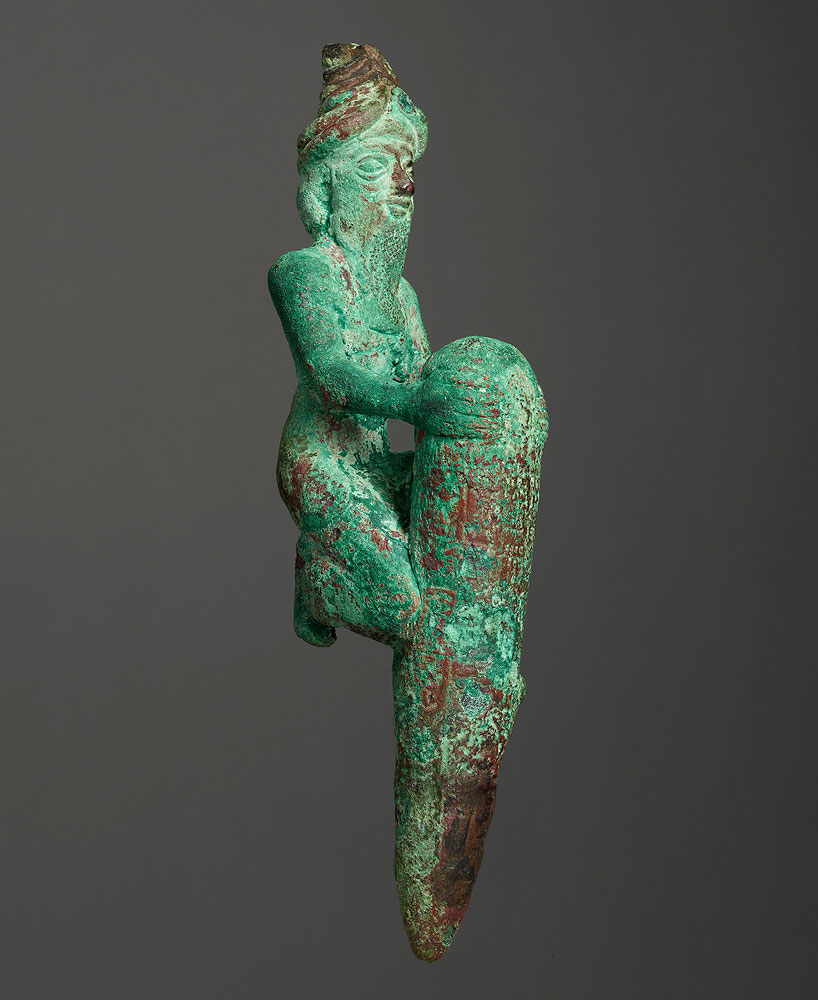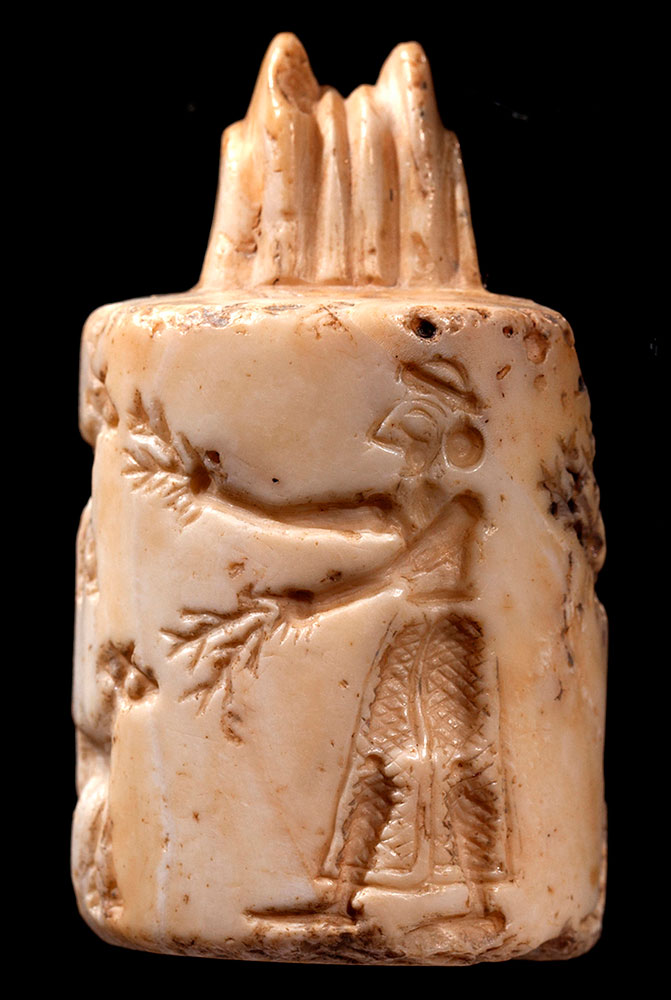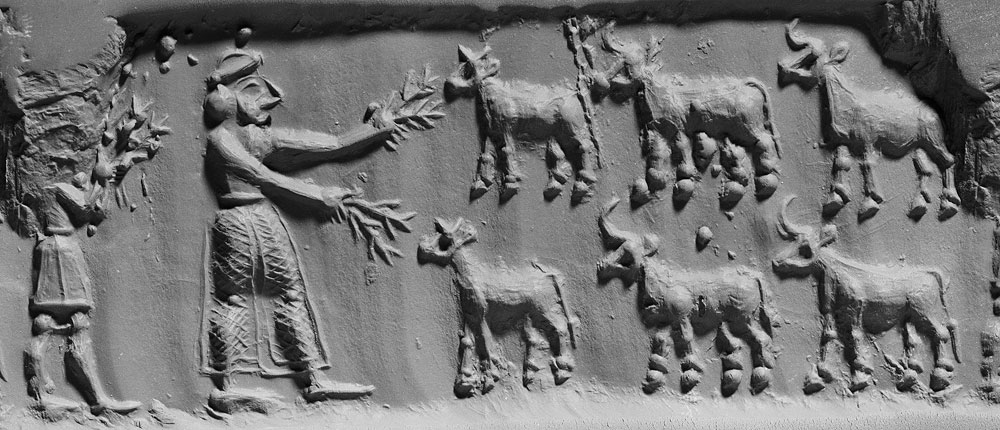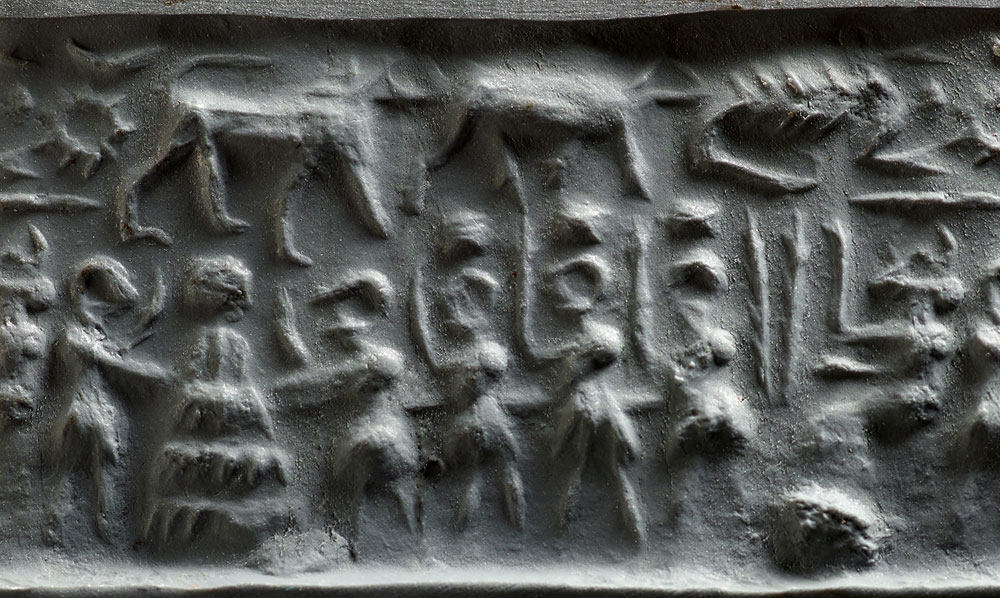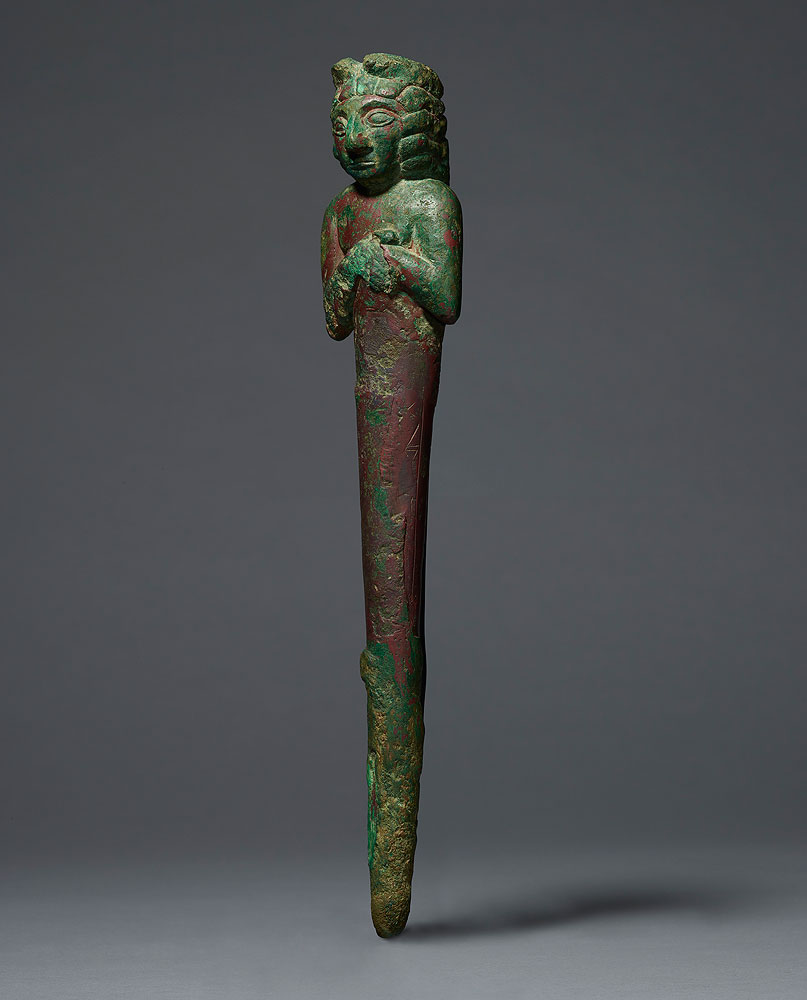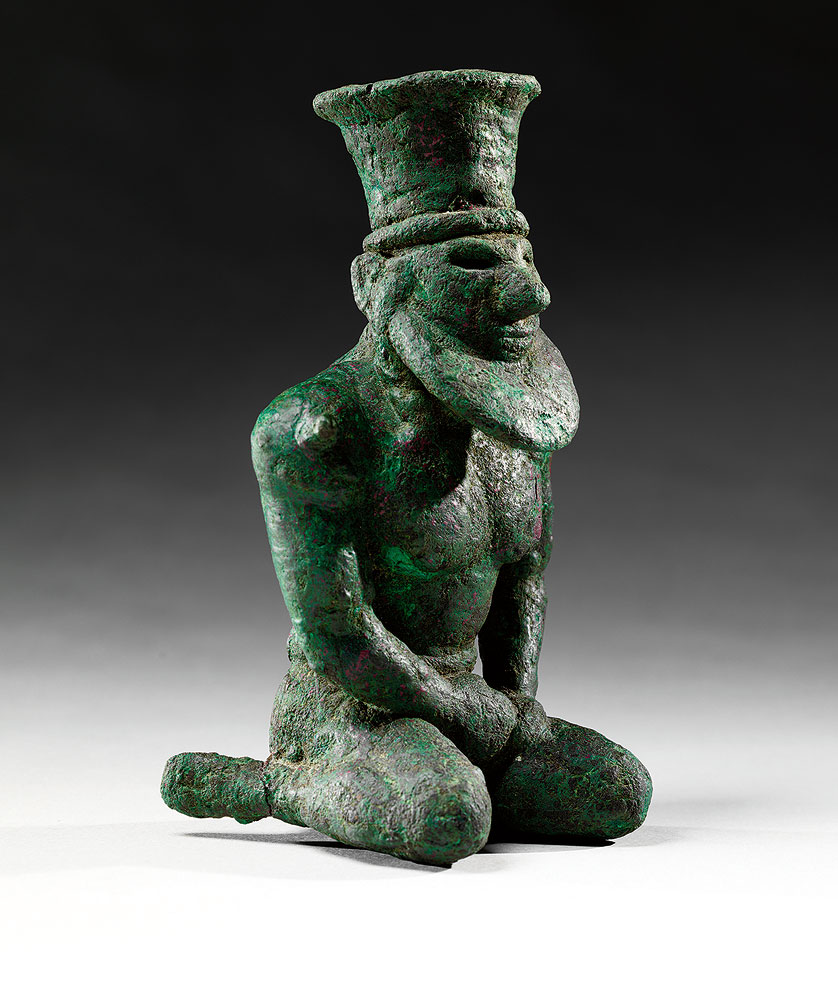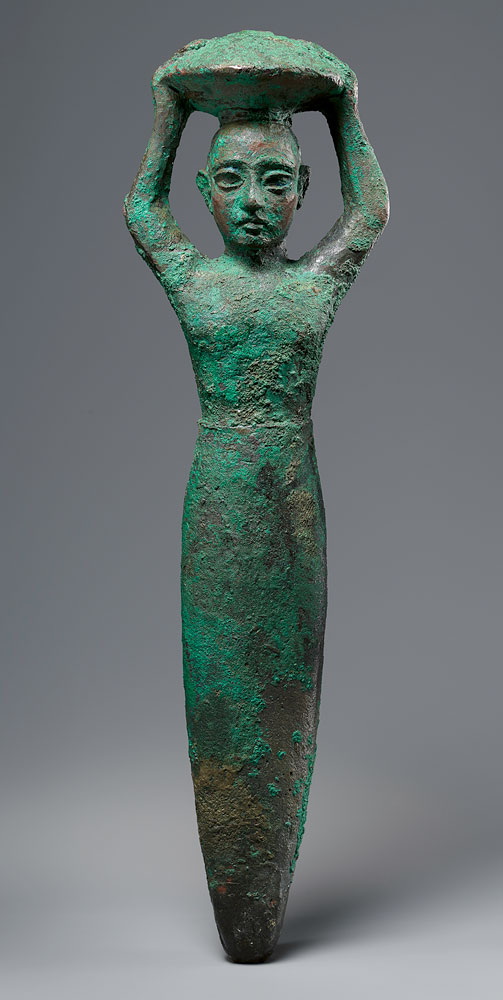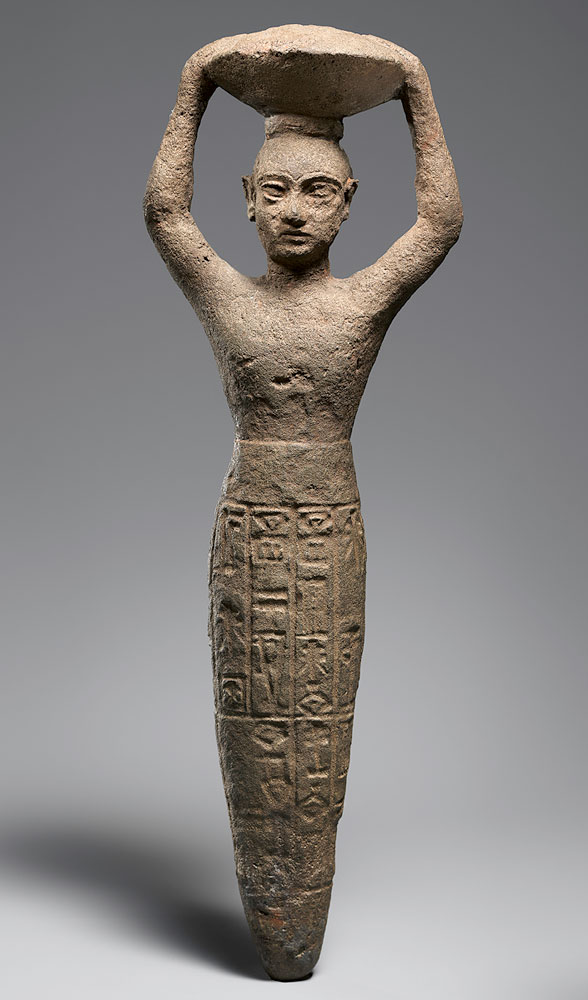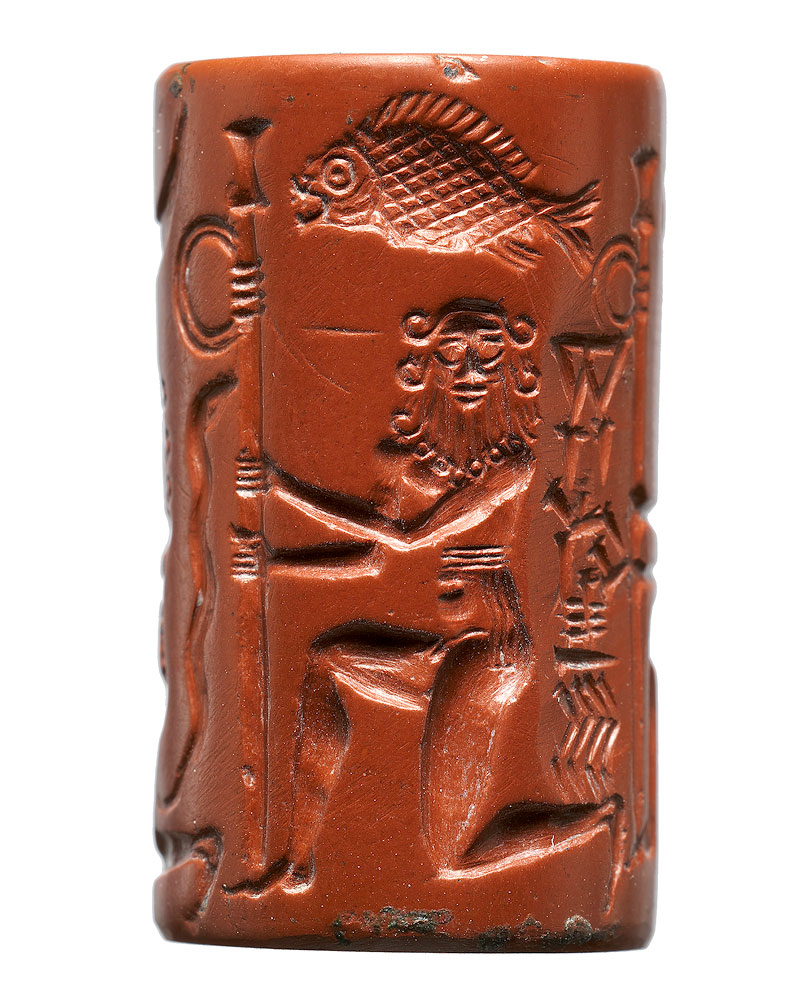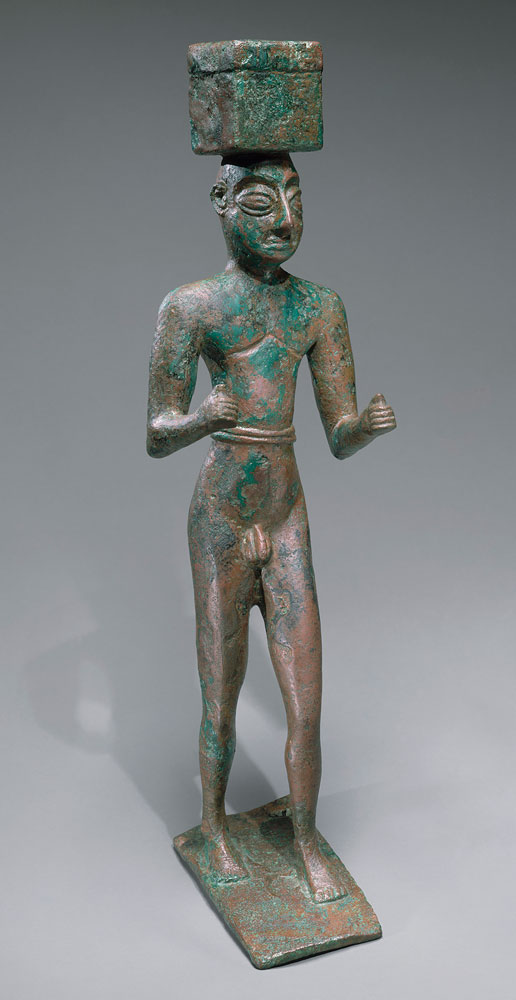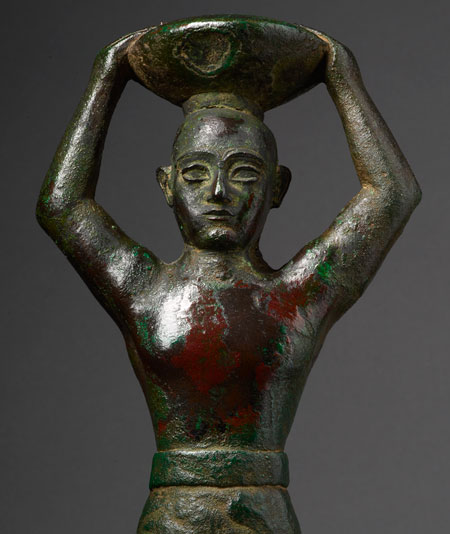
Standing about a foot tall, the small yet monumental “foundation figures” in ancient Mesopotamia were not created to be seen by mortal eyes. Cast in copper and placed beneath the foundation of a building, often a temple, they were intentionally buried from prying humans. Perhaps only intended for the gods, they combine both abstract and natural forms and were created at the behest of royal rulers concerned with leaving a record of their humanity, deeds, and civilization.
Surviving examples are exceedingly rare and Founding Figures brings together ten outstanding works, including ancient cylinder seals, from several public and private collections such as the Metropolitan Museum of Art and the Babylonian Collection of Yale University. With the Morgan’s own “Foundation Figure of King Ur-Namma” serving as centerpiece, the exhibition demonstrates how the medium of copper allowed sculptors to explore a variety of forms with a fluidity not available in traditional stone, resulting in figures of exceptional grace and delicacy. Enlarged impressions of scenes engraved on cylinder seals, maps, and other visual tools are also displayed to provide historical and cultural context.
Founding Figures is made possible with generous support from Jeannette and Jonathan Rosen.
A Neo Sumerian Copper Foundation Figure of King Ur-Namma (detail). Mesopotamian, Third Dynasty of Ur, ca. 2112–2004 B.C. reign of King Ur-Namma, ca. 2112–2094 B.C. The Morgan Library & Museum.

